CHOLATSE 6440M AND KYAJO RI 6186M PEAK CLIMBING
CHOLATSE AND KYAJO RI
Embark on a thrilling ascent of the challenging peaks, Cholatse 6440 meters and Kyajo Ri 6186 meters. These technical summits in the Himalayas also demand experience and confidence in handling steep, exposed sections with sheer drops of several hundred meters. The climbing route also boasts a grade of WI2+ M3-4 A1-2, necessitating a skill level equivalent to climbing technical peaks at D+/-, 5.9/5.10-grade levels around the globe.
This expedition isn’t for novices but rather geared towards intermediate to advanced climbers who seasoned themselves in facing similar technical challenges. If you possess a solid climbing background and are ready to tackle demanding ascents, the Cholatse/Kyajo Ri expedition awaits your conquest.
Pre-requisite experiences (2 or more 6000M + multi-pitch climbing skills & ice climbing): Lobuche East & Island Peak, Chulu West, Khumbu 3 Peak expeditions, Baruntse, Ama Dablam, multi-pitch climb (rock or ice), rock climbing grade up to 5-9+/- to 5.10 a,b,c (Similar 4000M – 6000M peaks or higher) and Ice climbing WI-2 to WI-4.
This expedition initially follows the classic Everest Base Camp trek route up to Namche, after which it veers towards the Thame Valley, guiding us to the Kyajo Ri base camp for our ascent. Kyajo Ri serves as a valuable acclimatization peak before we progress to our ultimate goal of summiting Cholatse.
This expedition is also notably technical, involving numerous mixed sections, an exposed knife-edge ridge route, and breathtaking panoramic vistas of Everest, Lhotse, and Makalu from the summit. Our ascent will follow the South West ridge route, establishing Camp 1 and Camp 2 along the way. Be prepared for challenging and exposed climbing throughout this exhilarating expedition.
History: First ascent made by a French team (Boris Badaroux, Philippe Batoux, Marc Challamel, Christophe Mora, Paul Robach (leader) via North Face in 1996.
EXPEDITION HIGHLIGHTS
- Cholatse 6440 meters & KyaJo Ri 6186 meters summits
- South-west ridge route, Camp 1 – 2 Strategy
- Return hike down the Khumbu Valley
- 1:2 climbing ratio at Kyajo Ri 6186M and 1:1 Guide/Client ratio on Cholatse
- Namche Bazaar, Thame, Phortse and Khumbu scenic views
Itinerary
-
Day 1 & 2 Arrival. Briefing, gear check, and final preparations.
-
Day 3 Fly to Lukla, trek to Monjo 2880M (6 - 7 hours)
-
Day 4 Trek to Namche Bazaar 3440M (5 - 6 hours)
-
Day 5 Namche acclimatization day (2-4 hours acclimatization hike to Everest View Hotel 3962M)
-
Day 6 Namche to Mende 3740M (6-8 hours)
-
Day 7 Mende to Kya Jo Ri base camp 4500M (6 hours)
-
Day 8 Rest and Base camp preparations
-
Day 9 Kya Jo Ri High Camp 5300M
-
Day 10 Camp 1, 5700M (5-6 hours)
-
Day 11 Summit 6186M and back to High camp (8 - 10 hours)
-
Day 12 Contingency day
-
Day 13 High camp to BC and trek to Khumjung (6-8 hours)
-
Day 14 Khumjung to Phortse 3840M (6 hours)
-
Day 15 Phortse to Cholatse Base Camp, 5000M (6 hours)
-
Day 16 Rest and preparations for Cholatse climb
-
Day 17 Camp 1, 5600M (6 - 8 hours)
-
Day 18 Camp 2, 6200M (4 - 5 hours)
-
Day 19 Summit 6440M or 6446M and back to base camp (10+ hours)
-
Day 20 - 22 Contingency day (3 days) (Fly back from BC to Lukla/Kathmandu. Inquire for helicopter charter price quote)
-
Day 23 BC to Phortse (5 hours)
-
Day 24 Phortse to Namche Bazaar (5 - 6 hours)
-
Day 25 Namche to Lukla (6 - 8hours)
-
Day 26 Lukla to Kathmandu (6 - 8 hours)
-
Day 27 Final Departure
Include / Exclude
Cost Includes:
-
- IFMGA/NMA certified Guide leader
- $500 Individual tip pool. (This is not a summit bonus tip) Tip pool will be fairly distributed among all 7 Summits staff members. (Guides, porters, drivers, hotel security and staffs). Guest may personally hand in extra tips to our guides and porters)
- 7 Summits Branded merchandise (Down Jacket, Cap, Buff)
- 1:1 Sherpa Guide/client ratio. (Additional Sherpa Guide can be arranged if needed, extra charges apply)
- Head chef and 2 kitchen helpers (Helpers increase with the numbers of climbing team members )
- 2 nights before the expedition and 1 day after the expedition. Hotel in Kathmandu. (Should clients return early from their expedition, clients will be responsible for their extra Kathmandu hotel bookings)
- All trekking permits (Khumbu Region and Peak Permit and TIMS)
- All internal-local transportation to and from the trekking trailhead
- Breakfast, Lunch, and Dinner on trek days. (one meal order)
- Lodge accommodation during the trek
- Full porter support to/from Base Camp
- Fooding and camp lodging arrangements at Base Camp on a full board basis (this includes 3-course meals, services of cook crew, camping equipment, kitchen tent, dining tent, toilet tent, shower tent, kitchen items, etc)
- 30 kgs personal weight (Extra additional weight, clients will need to hire an additional porter. Estimated $700 USD for 21 – 22 Days)
- Single tent for individual use at Base Camp
- Solar charging at Base Camp (Comms will be given the first priority)
- Snacks and goodies for rest days including olives, dry meats, pate, crackers and cheeses, chocolate bars, ground coffee, nuts. A whole bunch of superfoods. Hydration/electrolyte tablets.
- Tents, pots, and pans for use on the mountain
- Expedition tents ( 2 or 1 person tents) Brands Salewa, Mountain Hardwear, Samaya equipment, Kailas
- Food and fuel above Cholatse and Kyajo Ri Base Camp. Minimum choices from Camp I to Camp II.
- 7 Summits staff stationed at Camp 1 who will be melting ice and providing hot water for you when you camp there
- Training day with technical skills. This is not a course day and you should already be well familiar with abseiling and basic climbing techniques
- Ropes, climbing gear required for equipping the mountain, ice screws, snow stakes etc
- Expedition 1st aid kit including antibiotics and medicines for use at altitude
- Insurance for Base Camp crew, climbing Sherpa and porters
- Radio comms team at Base camp
- Frequent updates on expeditions
- Porters throughout the expeditions
- Arrival pick up and departure
- Internal flights
- Welcome or Farewell leave Dinner
Cost Excludes:
- Visas and travel insurance
- Summit Bonus tip ($700 P/P)
- Entertainment and food ( Kathmandu )
- Bottled drinks and beverages
- Evacuation (will be done in your account)
- Single supplement Charges
- Laundry, Phone services, Personal expenditure transactions
- Optional trips
- Tea breaks, chocolates or other snacks, and any meals besides breakfast, lunch, and dinner.
- Delay and cancellation because of natural phenomenon
- International flights to Kathmandu
Price per person
CHOLATSE 6440M AND KYAJO RI 6186M
ASCEND TWO TECHNICAL PEAKS.
LESS CROWDED CLIMBS
2024 CHOLATSE 6440M & KYA JO RI 6186M
22 – 27 DAYS
EQUIPMENT RENTALS AVAILABLE (LINK)
GRADING (Alpine/Fitness): TD/5 (click for more grading Infos)
COST—
Cholatse & Kyajo Ri
$10,950 P/P
Cholatse Only
$7950 P/P
Kyajo Ri only
$6500 P/P
Please inquire about prices in your local currency. We accept payment in £GBP/ €EUROS/ $AUD
Deposit required: $1500 p/p
Solo booking accepted but subject to 4 climbing members
2024 CHOLATSE DEPARTURES—
4th – 30th November
All-inclusive expedition. Guaranteed departure.
SINGLE SUPPLEMENT—
$4000 USD Only applies if there is only 1 client member. Additional support.
Usefull Information
ACCOMMODATIONS
Day 1 – 2 and 26 (Kathmandu 5-star hotel)
KYAJO RI AND CHOLATSE EXPEDITION STRATEGY
KYAJO RI 6186M (TECHNICAL CLIMB + ACCLIMATIZATION PEAK)
Kyajo Ri, standing tall at 6186 meters, serves as an excellent acclimatization climb for the Cholatse expedition. This peak presents a technical challenge, offering climbers an opportunity to hone their skills before taking on the more demanding ascent of Cholatse. With its intricate routes and varying degrees of difficulty, Kyajo Ri provides a perfect platform for acclimatization while allowing climbers to familiarize themselves with steep sections and technical terrain.
Ascending Kyajo Ri not only aids in adjusting to higher altitudes but also offers panoramic vistas of the surrounding Himalayan landscape, including stunning views of the Everest, Lhotse, and Makalu peaks. Climbers can expect a mix of steep ascents, traverses, and snow/ice sections, preparing them adequately for the subsequent climb of Cholatse. Overall, Kyajo Ri stands as a valuable intermediate climb, preparing adventurers for the challenges that lie ahead on the grander ascent of Cholatse.
🏔Cholatse expedition consists of 2 high camps. We will climb through the southwest ridge route, which is the safest commercial route comparatively. Once established in Base Camp 5000M, we will set up a fixed-line and move loads to camp1-2 and summit. The harder and more technical climbing of this expedition begins from camp 1 leading up the southwest ridge of the mountain.
BASE CAMP (5000M), ICEFALL TO – CAMP 1 (5700M)
Cholatse Base Camp 4529M
We will have 1 to 2 acclimatization rotations. Once we leave the base camp and after hiking 400M high up the grassy moraine, we will arrive at the crampon point, which is about 100M away from the icefall. As we reach onto the icefall, climbing through the zigzag icefall route will lead us under the ice headwall which is about 150M high. The headwall is about 45-50 degrees. Climbers will have to fix themselves onto the fixed line rope and climb the wall, which leads to a flat section just above the west col. Here we will set up our camp 1 (5700M) on the flat small pleateu part above the col. The views down the valley to Gokyo valley are fantastic from here.
CAMP 1 (5600M) – CAMP 2 (6200M)
This will be the hardest part of the entire expedition. The route from camp 1 to camp 2 is about 600M high, on the southwest ridge of the mountain, which is super exposed and consists of mixed terrains. The climb is strenuous and there is just one small area to rest.
The first 100M – 150M is steep climbing, to the top of the rocky slab section. From there the route leads behind the ridge of the mountains on a rocky, loose and unstable area. The rocks are unstable and there is little protection when climbing up the face of the mountain. Climbers will have to scramble on exposed slabs (sometimes loose) rocks, which then leads to the end of the rocky section before reaching the nice flat part which is the only spot to rest before pressing ahead.
Cholatse Camp 2 6000M
The climb then follows an uphill steep climb onto the knife-edge ridge section, 400M upwards mostly on the snow/icy surface. The climb uphill is another 45 – 60 degrees steep. The drop on either side of the mountain ridge is crazily exposed. High above a big chunk of ice/snow hump can be seen, where our team will establish camp 2 (6200M). About 75M – 50M short of camp 2, the route gets rather challenging and uneven, where climbers will come across ice mushroom wall formations and seracs. Technical climbing skills are necessary. You will need to traverse and somewhat climb with alpine style, ice climbing to get navigate the uneven terrains to get to camp 2. Extra attention is needed to reach at the top where camp 2 will be established by the guiding team.
CAMP 2 – SUMMIT 6440M (TRUE SUMMIT 6446M)
The climb from Camp 2 to the summit is about 256m climbs. As you look up from camp 2 it does look like a fairly straight climb but the route gets super narrow and steep on both sides. Another knife-edge section and a couple of crevasse openings on the route. The climb gets technical and difficult. Climbers will have to be careful at this height of not slipping onto any sides of the mountain. Once past the ridge section, you will come upon a relatively flatter area on the summit at around 6440M. The true summit lies 5M – 6M ahead but is very tricky with just a small pyramid structure that may hold only one person at a time.
Equipment List
Mountain climbing Gears
- Helmet (Black diamond, Petzel, Kailas, Grivel)
- Alpine Ice Axe (65-70cm)
- A mountaineering harness, with adjustable leg loops.
- Carabiners: 3 locking and 6 regular
- Rappel device: ATC or figure 8
Mountaineering boots
- Mountaineering boots suitable for above 8000m; La Sportiva or equivalent
- Hiking shoes for the trek to base camp with ankle protection
- Thermal mountaineering socks or equivalent: 6 pairs
- Liner socks or equivalent: 6 pairs
Body Layers:
- Expedition suits – North face Himalayan suit or similat
- 4 merino base layers: top / bottom set
- 5 mid layer top: breathable Underwear
- Lightweight Nylon Pants: 1 pair
- Hooded Soft Shell jacket To be worn over other layers
- Soft Shell Guide Pants: Gore Tex and breathable
- Hooded Hard Shell: Gore Tex and breathable
- Hard Shell Pants: Gore Tex and breathable, big enough to wear over your guide trousers
- Insulated Down Jacket with hood: North Face Himalayan parka or equivalent
- Insulated synthetic Pants: Worn primarily when climbing below Camp 2
- Long jones equivalent to Rab’s Polartec or equivalent: 2 pairs
Headgear and Hand wear:
- Wool hat (ski hat)
- Sunhat: To shade your face / neck from the sun on a hot day
- Buff: To protect your neck / face from the sun
- Glacier glasses: Full protection with side covers or wrap around
- Ski goggles: To be worn on summit day in the event of high winds
- Lightweight synthetic liner gloves: For wearing on a hot day; 2 pairs
- Soft shell gloves: To wear for moderate cold / wind
- Shell glove with insulated liner: To wear for severe cold / strong wind
- Expedition Mitts for bad weather
Personal Gear:
- Expedition Backpack: 65L pack should be large enough.
- Trekking Backpack: To carry on the trek to base camp. Simple and light.
- Sleeping Bag: Rated to at least -40°F. Goose down or synthetic
- Compression stuff sacks: 3 large ones; for reducing volume of the sleeping bag, down parka, etc., in your pack.
- High Quality sleeping pad (1 for base camp and 1 for high camps): Full length is preferred.
- Closed cell foam pad: To be used in conjunction with the inflating pad for warmth and comfort when sleeping.
- Trekking poles with snow baskets: Adjustable poles
- Cup: Plastic insulated cup for drinking
- Bowl: A plastic bowl for eating dinner or breakfast
- Spoon: Plastic spoon
- Head torch: 1 normal for base camp and 1 with remote battery systems for climbing at night. This will be used whilst climbing at night
- Sunscreen: SPF 50 or above
- Lip balm with sunblock
- Water bottles: 2 wide mouth bottles with 1 litter capacity
- Water bottle parkas (2): fully insulated with zip opening
- Thermos: 1 litre (buy a good ones to keep your water warm for longer hours)
- Pee bottle: 1 litre minimum bottle for convenience at night in the tent
- Toiletry bag: Include toilet paper and hand sanitizer and small towel
- Hand warmers & toe warmers
- Pen Knife or multi tool (optional)
- Camera: bring extra batteries and memory cards
- Personal solar charging system (optional but recommended)
- Travel Clothes
- Duffel bags (2) with locks: To transport equipment
- Base Camp extra Items: Kindle, I pad, smart phone, etc
- Snack food: Please bring a few days of your favourite climbing snack food such as bars, gels, nuts, beef jerky, etc. A variety of salty and sweet is recommended to give you extra energy.
- Small personal first aid kit: Include athletic tape, Band-Aid’s, Ibuprofen, blister care, personal medications, etc
- Medications and Prescriptions: Bring antibiotics (Azithromycin, etc.), and altitude medicine such as Diamox and dexamethasone*
-
 Best Seasons September to November
Best Seasons September to November -
 Group Size 2 to 10
Group Size 2 to 10 -
 Duration 27 DAYS BOOKING OPEN
Duration 27 DAYS BOOKING OPEN -
 Maximum Altitude 6440M at Cholatse Peak Summit
Maximum Altitude 6440M at Cholatse Peak Summit -
 Trek Difficulty Challenging
Trek Difficulty Challenging

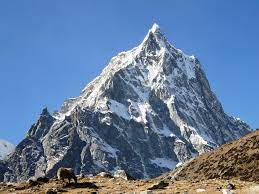


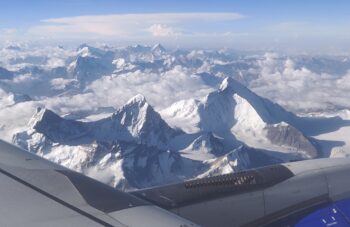
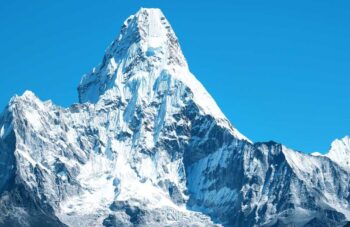
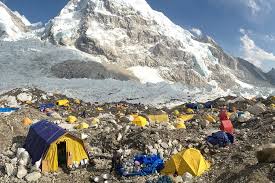
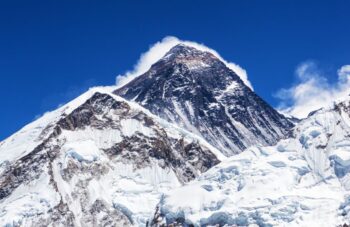
Leave a Reply